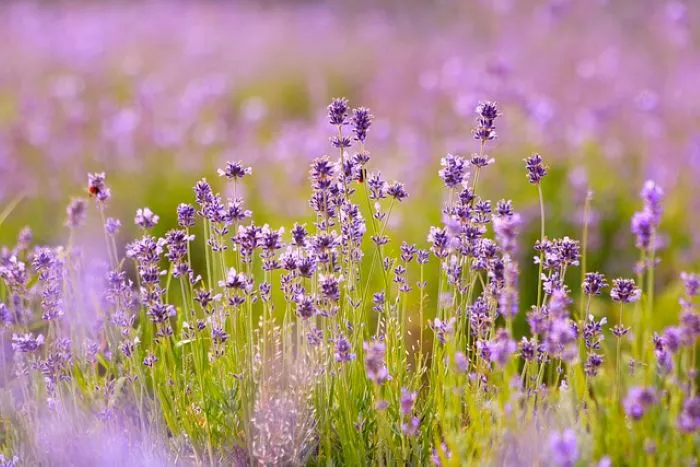Drying lavender flowers at home is a rewarding process that allows you to preserve their beauty and fragrance. Dried lavender can be used in various applications, including potpourri, sachets, and culinary dishes. This article provides a comprehensive guide on how to dry lavender flowers effectively. It covers the best practices, methods, and tips for achieving optimal results.
Introduction to Lavender Drying
Lavender is a popular herb known for its soothing scent and vibrant purple flowers. Drying lavender not only extends its shelf life but also concentrates its aromatic qualities. Whether you grow lavender in your garden or purchase fresh blooms, knowing how to dry them properly ensures that you can enjoy their benefits long after the growing season ends.
Dried lavender can be used in many ways. It can be added to homemade soaps, used as a natural air freshener, or incorporated into cooking. The drying process is simple and can be done using various methods.
Choosing the Right Lavender
Before drying lavender, it is essential to select the right variety. English lavender (Lavandula angustifolia) is the most commonly used type for drying due to its strong fragrance and long-lasting properties. Look for healthy, pesticide-free flowers that are in full bloom. The best time to harvest lavender is in the morning after the dew has dried but before the heat of the day sets in.
Harvesting Lavender Flowers
Proper harvesting techniques are crucial for preserving the quality of lavender. Follow these steps for optimal results:
Use Clean Tools: Use sharp garden shears or scissors to cut the lavender stems. This helps prevent damage to the plant and ensures a clean cut.
Cut at the Right Time: Harvest lavender when the flowers are fully open but not yet faded. This is typically just before the blooms start to lose their color.
Select Healthy Stems: Choose stems that are healthy and free from pests or diseases. Aim to cut stems that are at least 6 to 8 inches long for easier handling during the drying process.
Bundle the Stems: Gather the cut stems into small bundles. Avoid making the bundles too large, as this can hinder airflow during drying.
Methods for Drying Lavender
There are several effective methods for drying lavender flowers at home. Each method has its advantages, depending on your available resources and preferences.
Air Drying
Air drying is the most traditional and straightforward method. It requires no special equipment and works well for small batches of lavender.
Prepare the Bundles: Tie the lavender stems together using string or rubber bands. Make sure the stems are tightly bound to prevent them from falling apart.
Choose a Dry Location: Hang the bundles upside down in a warm, dry, and dark place. A closet, attic, or a well-ventilated room works well. Avoid direct sunlight, as this can fade the color and scent.
Wait for Drying: Allow the lavender to dry for about two to four weeks. Check the flowers periodically. They are ready when the stems feel dry and the flowers crumble easily when touched.
Oven Drying
Oven drying is a quicker method for those who want to dry lavender in a short amount of time.
Preheat the Oven: Set your oven to the lowest temperature, usually around 180°F (82°C).
Prepare the Lavender: Spread the lavender flowers in a single layer on a baking sheet lined with parchment paper. Make sure they are not overcrowded.
Dry in the Oven: Place the baking sheet in the oven and leave the door slightly ajar to allow moisture to escape. Check the lavender every 10 to 15 minutes. It should take about 30 to 60 minutes to dry completely.
Cool and Store: Once dried, remove the lavender from the oven and let it cool before storing.
Dehydrator Method
Using a food dehydrator is another effective way to dry lavender quickly and evenly.
Prepare the Dehydrator: Set the dehydrator to a temperature of about 95°F (35°C).
Arrange the Lavender: Place the lavender flowers on the dehydrator trays in a single layer, ensuring good airflow between them.
Drying Process: Let the dehydrator run for about 12 to 24 hours. Check for dryness regularly. The lavender is ready when the flowers are brittle and crumble easily.
Storing Dried Lavender
Once the lavender is completely dry, proper storage is essential to maintain its fragrance and color.
Choose the Right Containers: Store dried lavender in airtight containers. Glass jars, metal tins, or sealed plastic bags work well.
Keep Away from Light: Store the containers in a cool, dark place to protect the lavender from light and heat, which can degrade its quality.
Label and Date: Label the containers with the date of drying. Dried lavender can last for one to three years when stored properly.
Tips for Success
Harvest lavender in dry weather to prevent moisture from affecting the drying process.
Avoid washing the lavender before drying, as excess moisture can lead to mold.
If you want to retain the fragrance, consider adding a few drops of lavender essential oil to the dried flowers before storing them.
Experiment with different drying methods to find the one that works best for you.
Conclusion
Drying lavender flowers at home is a simple and rewarding process. With the right techniques, you can preserve the beauty and fragrance of lavender for various uses. Whether you choose to air dry, oven dry, or use a dehydrator, following the steps outlined in this article will help you achieve excellent results. Enjoy the delightful scent of dried lavender in your home, and let your creativity flourish as you use it in crafts, cooking, and relaxation.


